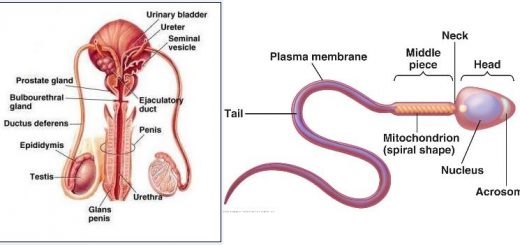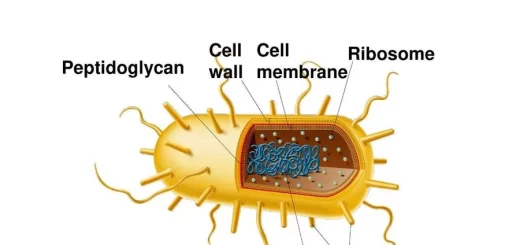Embryonic connective tissue, Connective tissue proper and Specialized connective tissue
Connective tissue connects, separates & supports all other types of tissues in the body, it consists of cells surrounded by a compartment of fluid called the extracellular matrix (ECM). The connective tissue is the glue that holds all other tissues together, it has the important function of ensuring that our body systems work in harmony.
Classification of connective tissue
The classification depends on the proportion of cells to fibers, and on the arrangement, and the types of fibers, there are three categories that can be defined:
1- Embryonic connective tissue; it includes:
- Mesenchymal CT.
- Mucoid CT.
2- Connective tissue proper; it includes:
- Loose areolar connective tissue.
- Dense irregular connective tissue.
- Dense regular connective tissue.
- Elastic connective tissue.
- Reticular connective tissue.
- Adipose connection tissue.
3- Specialized connective tissue; it includes:
- Cartilage.
- Bone.
- Blood.
Types of connective tissue
Embryonic connective tissue
I- Embryonic connective tissue is classified into two Subtypes: Mesenchymal CT (mesenchyme) and Mucoid CT.
Mesenchymal CT (mesenchyme) is found in the embryo. It consists of:
- Undifferentiated mesenchymal cells (UMCs) with their processes come in contact with each other forming a network.
- A gel-like, amorphous substance.
- Scattered reticular fibers.
Mucoid CT is found in the umbilical cord and pulp of growing teeth. It consists of:
- Abundant ground substance (Wharton’s jelly) composed mainly of hyaluronic acid, it appears homogenous and basophilic.
- Spindle-shaped UMCs are widely separated and appear much like fibroblasts.
- Unapparent fine collagen fibers that have the same refractive index as the matrix.
II- Connective tissue proper
1- Loose areolar CT
Loose areolar CT is the most widely distributed connective tissue in the body. It binds body parts together while allowing them to move freely over one another, it contains many small blood vessels coursing through this tissue. Loose CT is found in the following sites:
- It is present beneath the epithelium in all mucous membranes forming the (lamina propria.)
- It forms the papillary layer of the dermis which attaches the skin epidermis to underlying structures.
- It surrounds glands, small blood vessels, and nerves.
Histological structure:
- All types of fibers; collagen, elastic, and a small proportion of the reticular fibers.
- All types of connective tissue cells with a predominance of fibroblasts and macrophages.
- A good amount of ground substance.
Function:
- Supports and binds other tissues (by its fibers).
- Holds body fluids and provides nutrition (by its ground substance).
- Defends against infection (by its white blood cells, plasma cells, mast cells, and macrophages).
2- Dense irregular CT
Histological structure:
- Thick bundles of collagen fibers arranged irregularly (running in more than one plane).
- A little amount of ground substance with few fibroblasts.
Sites & function: this type of tissue forms sheets in body areas where tension is exerted from many different directions.
- It is found in the reticular layer of the dermis of the skin.
- It forms the capsules of fibrous joints.
- It forms the capsules of body organs e.g. kidney, spleen, lymph nodes, and liver.
3- Dense regular CT (White fibrous CT)
Histological structure:
- Closely-packed wavy bundles of collagen fibers running in the same direction and parallel to the direction of pull.
- Rows of fibroblasts (tendon cells) with flattened nuclei aligned between the collagen bundles.
- A little amount of ground substance.
Sites & function: Unlike areolar CT, this tissue is poorly vascularized. This type of tissue forms white flexible structures with great resistance to pulling forces wherever it is exerted in a single direction, it is found in:
- Tendons, which attach muscles to bones.
- Ligaments, which bind bones together at joints.
4- Elastic CT
Histological structure: the elastic fibers predominate; they run in all directions, also they may form fenestrated membranes.
Sites & function: this tissue is present where flexibility and elastic recoil are needed; it is found in:
- Elastic laminae of arteries.
- True vocal cords.
- Few ligaments in the body are very elastic such as ligamenta flava and ligamenta nuchae connecting adjacent vertebrae.
5- Reticular CT
Histological structure:
- Reticular fibers, forming a network.
- Reticular cells, these are the fibroblasts of reticular connective tissue, that synthesize the reticular fibers.
Site & function: reticular tissue is limited to certain sites, it forms the supporting stroma for:
- Hemopoietic tissue in the bone marrow.
- Lymphoid tissue in lymph nodes and spleen.
- Hepatocytes in the liver.
Adipose connective tissue
There are two types of adipose tissue; the unilocular and multilocular adipose tissues.
Uniocular (white) adipose tissue
Its color varies from white to yellow due to the presence of carotenoids dissolved in fat droplets of the cells.
Histological structure:
- It is formed of unilocular adipocytes, which are either spherical when single or polyhedral when closely-grouped.
- A little amount of ground substance, with a fine network of reticular fibers surrounding the cells.
- It has a rich blood supply.
Sites: It is present throughout the human body; it usually accumulates in the subcutaneous tissue, around the kidneys, and behind the eyeballs.
Function:
- Storage of energy in the form of triglycerides.
- Subcutaneous adipose tissue shapes the body.
- Pads of fatty tissue in palms and soles act as a shock absorber.
- thermal insulation of the body; due to the poor heat conduction of adipose tissue.
- Fixation of the vital organs as heart and kidney, thus keeping them in position.
Multiocular (brown) adipose tissue
Histological structure:
- It is formed of multilocular adipocytes.
- This tissue has a large number of blood capillaries. It is called brown fat due to a large number of blood capillaries and the numerous mitochondria containing colored cytochromes.
Sites: It is found in certain areas in the abdomen and neck of the human embryo and the newborn, as children grow older, the lipid droplets tend to coalesce together and most of the brown fat differentiates into white fat.
Function: Brown fat is concerned with the production of heat (thermogenesis) in the first months of postnatal life to protect the newborn against cold.
Specialized connective tissue
Cartilage
The cartilage is a strong, flexible, and semi-rigid supporting tissue, it can withstand compression forces, and yet it can bend, it is made up of cells and an extracellular matrix, which is made up of about 75% water, and a mix of collagen fibers and other constituents.
Bone
Bone is a type of connective tissue with a calcified extracellular matrix, specialized to support the body, protect many internal organs, and act as the body’s calcium reservoir. Like cartilage, and other types of connective tissue, bone is composed of cells and an extracellular matrix, which is made up of only 25% of water, almost 45% of bone is made up of bone minerals called hydroxyapatite (calcium and phosphate ions).
Blood
Blood is a specialized connective tissue that is composed of cells and plasma (the fluid extracellular matrix).
Connective tissue cells types, function & structure, Resident cells & Transient cells
Connective tissues structure, types, function, fibers & ground substances
Supporting connective tissue, Cartilages function, structure, types & growth
Protein biosynthesis steps, site, importance, inhibitors & Protein maturation
Integumentary system, Skin importance, layers, types & function



